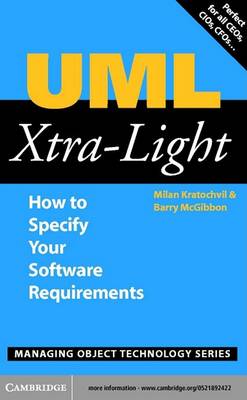SIGS: Managing Object Technology
2 total works
If you are a non-technical person with a stake in the success of a software project, this book is for you. Business managers often find it impossible to communicate business objectives and specify their software requirements to technical members of staff. This beginner's guide teaches readers to communicate with software developers in a more focused, effective way. It describes the basic diagrams of the UML modeling notation and shows how they are used to specify requirements in an unambiguous way. When used on project, the risk of failure through unclear requirements is removed.
Written for software managers, Managing Your Move to Object Technology clearly defines and illustrates the management implications associated with the transition to object technology. Although other books may cover the technological benefits of OT, this is one of the few to address the business management issues associated with new technology and the corporate environment. It covers what OT will do to the corporate culture, not simply what it will do for it. In frank and concise terms, the author answers questions about how an organization needs to change to make a successful migration to object technology. This book is also invaluable to organizations that have experienced difficulties with the introduction of OT. This book should be required reading for all IS and IT development managers, project leaders, and team captains who want to improve the effectiveness of the software development staff. It is also ideal for CIOs or Managing Directors who are considering object technology for future product or system development. As with any new technology, the challenge does not come from the methods or the toolsets but from an organization's ability to embrace a new approach.

